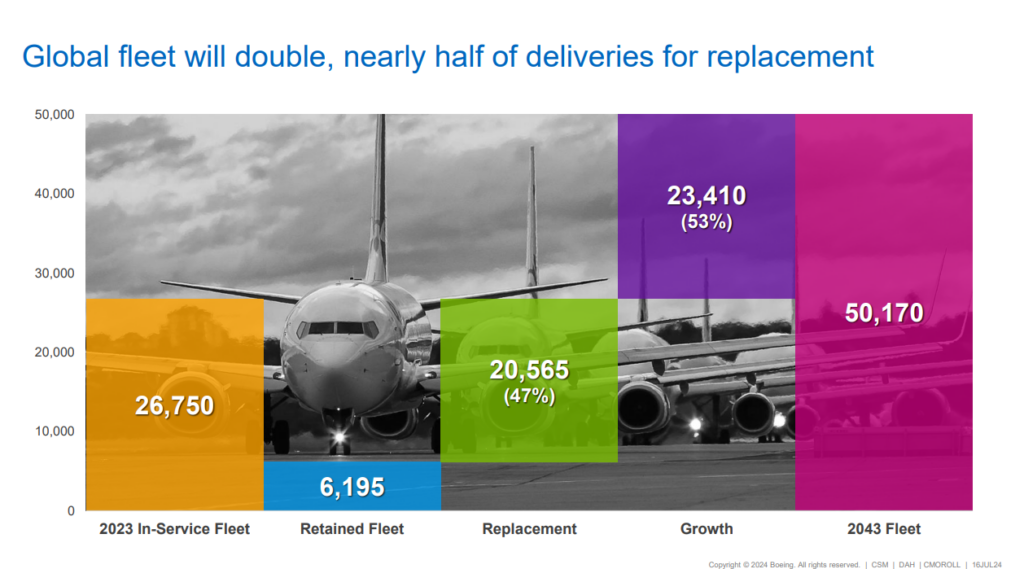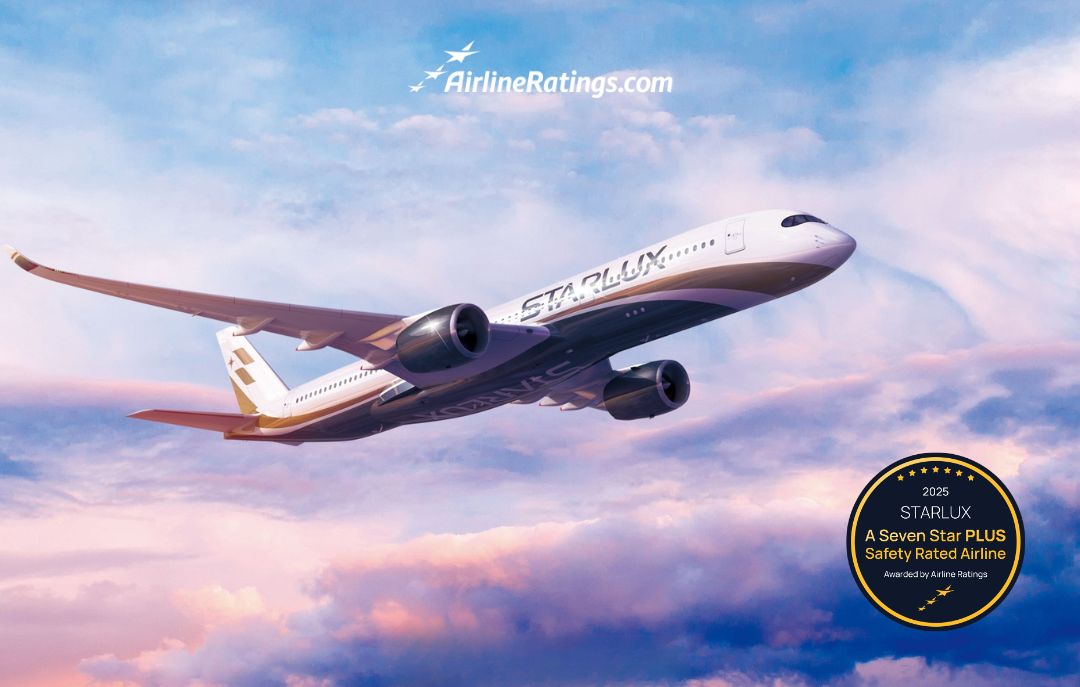
By Geoffrey Thomas
Published Fri Jul 19 2024
Boeing, one of the world’s leading aerospace companies has forecast the need for 44,000 new aircraft over the next 20 years as air travel surpasses pre-pandemic levels.
Released ahead of the Farnborough Air Show the Boeing annual Commercial Market Outlook (CMO) forecasts that the global passenger and freighter fleet will nearly double over the next 20 years and single-aisle aircraft will account for 76% of deliveries.
The report says that half of deliveries will replace older jets with more fuel-efficient models, improving sustainability.
Boeing says that air travel demand continues to outpace economic growth in an increasingly connected world and four years after the pandemic grounded most of the global fleet, air traffic growth has returned to the long-term trend Boeing forecast 20 years ago.

In a survey, Boeing found 84% of those surveyed said they would prioritize travel in their budget while 66% said they would travel more than pre-pandemic.

Compared to 2023, passenger air traffic will rise an average of 4.7% annually over the next two decades, according to the CMO.
Globally Boeing said that GDP is steady at 3%, while inflation is decreasing as are interest rates.

“This is a challenging and inspiring era for aviation. The return to more typical traffic growth shows how resilient our industry is, even as we all work through ongoing supply chain and production constraints amid other global challenges,” said Brad McMullen, Boeing senior vice president of Commercial Sales and Marketing.

CMO forecast highlights through 2043:
• The global commercial fleet is projected to grow 3.2% annually, more slowly than air traffic as airlines continue to boost productivity by increasing load factors and using airplanes more hours per day.
• With speed and reliability that consistently outperforms other modes of transport, the air cargo fleet will increase by two-thirds by 2043, to support 4.1% annual air cargo traffic growth. Air travel trends:
• The average global airline fare is about the same as it was 20 years ago, even as overall consumer prices doubled.
• The number of global routes served by commercial airlines has returned to 2019 levels, even though nearly 20% of them are new, illustrating the adaptability of aviation in a dynamic market. Key growth drivers:
• South Asia passenger traffic will increase 7.4%, followed by Southeast Asia (7.2%) and Africa (6.4%), as emerging markets return to historical growth trends through the forecast period.
• Eurasia is projected to lead all markets with the most airplane deliveries (22% of total) with North America (20%) and China (20%) close behind.
• Single-aisle airplanes will make up 71% of the 2043 fleet after 33,380 new deliveries, serving short- to medium-haul routes with versatility.
• The global widebody fleet will nearly double, with twin-aisles comprising 44% of the Middle East fleet. Services on the rise:
• Boeing expects demand for addressable commercial services valued at $4.4 trillion ─ driven by maintenance and modification options and digital solutions that increase efficiency.
• With air travel expansion especially in emerging markets, the commercial aviation industry will require nearly 2.4 million new personnel as well as training to support new pilots, maintenance technicians and cabin crew*.
“As airlines respond to robust passenger demand, the services market continues to expand, not only as a result of fleet growth but also with an increased focus on reducing operating costs and deploying efficient and sustainable solutions,” said Dan Abraham, senior vice president of Boeing Global Services Commercial Sales and Marketing.

New deliveries (2024-2043)
Regional Jet 1,525
Single Aisle 33,380
Widebody 8,065
Freighter 1,005
Total 43,975
Boeing has published the CMO annually since 1961.

READ: RIYADH AIR AND SINGAPORE AIRLINES ESTABLISH PARTNERSHIP
About AirlineRatings.com
Airlineratings.com was developed to provide everyone in the world a one-stop shop for everything related to airlines, formed by a team of aviation editors, who have forensically researched nearly every airline in the world.
Our rating system is rated from one to seven stars on safety – with seven being the highest ranking. Within each airline, you will find the country of origin, airline code, booking URL and seat map information. The rating system takes into account a number of different factors related to audits from aviation’s governing bodies, lead associations, as well as the airlines, own safety data. Every airline has a safety rating breakdown so you can see exactly how they rate.
Over 230 of the airlines on the site that carry 99 per cent of the world’s passengers have a product rating. Given that low-cost, regional and full-service carriers are so different we have constructed a different rating system for each which can be found within each airline.









